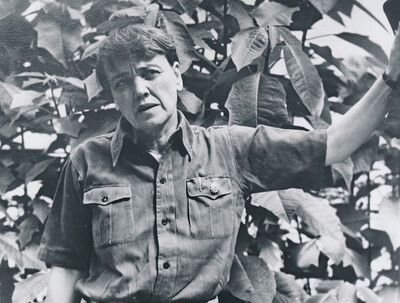
That’s because the American journalist made a name for herself in China, where she lived and worked between 1929 and 1941, and rose to national fame as a writer of China’s revolution, deeply opposed to the anti-intellectual and authoritarian forces of that era.
Students all over China learn about Smedley in school, her extraordinary rise from poverty and her enduring ideals of equality.
Her body is buried in the Babaoshan Revolutionary Cemetery, Beijing’s central resting place for the nation’s highest-ranking government leaders and revolutionary heroes. Her headstone reads: “In memory of Agnes Smedley, American revolutionary writer and friend of the Chinese people.”
Her papers, however, are housed at Arizona State University, the place where Smedley began her life as a writer and activist, then known as the Tempe Normal College.
“Smedley was a charismatic self-made rebel from the American West, whose leftist politics resembled that of her idol, Emma Goldman,” writes Stephen MacKinnon, ASU emeritus professor of history and author with Janice MacKinnon of “Agnes Smedley: The Life and Times of an American Radical.”
MacKinnon’s research is now part of a major exhibition series traveling China, led and curated by the ASU Library, in commemoration of the 70th anniversary of Smedley’s death.
The exhibition draws largely from the MacKinnons' work and from the ASU Library’s Agnes Smedley Collection, a 46-volume archive of Smedley’s writings, photographs and other artifacts that date back to 1911.
Part of the library’s Distinctive Collections, the Agnes Smedley Collection comprises more than 10,000 newly digitized archival items, said ASU librarian Ralph Gabbard, affiliated faculty with the Herberger Institute for Design and the Arts.
Read the full story on ASU Now.